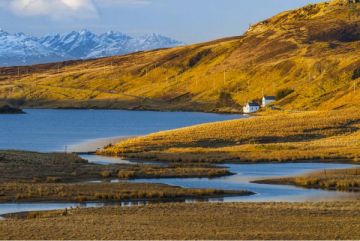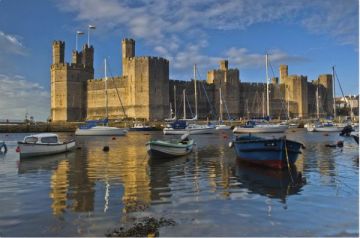Part 1 of 4
See Part 2 | Part 3| Part 4
Prince Philip died on 9 April 2021 at Windsor Castle. He was 99 years old.
It is perhaps inevitable that Prince Philip, Duke of Edinburgh, Earl of Merioneth and Baron Greenwich, will go down in the annals of history as the member of the Royal Family least afraid of speaking his mind. Indeed, the Dukeâs propensity for voicing his opinions on everything from the habits of foreign-exchange students to the inadequacies of electrical wiring has bought him a rather unenviable reputation for being blunt almost to the point of offence.
However, the Dukeâs fondness for describing the world as he sees it, and for refusing to compromise his views in the interests of decorum, can be attributed to two main factors. Firstly, and as any one who knows the Duke will testify, he is possessed of one of the sharpest (and, it must be said, wickedest) senses of humour in the Royal Family. Secondly, and more seriously, his friends point out discreetly that the remarkable and often difficult circumstances of his own life have imbued him with a loathing of hypocrisy and an intense dislike of voicing sentiments which have little, if anything, to do with his own famously strong opinions.
Born Prince Philip of Greece and Denmark at the Greek Royal residence of Mon Repos on the island of Corfu on June 10 1921, Philip was instantly fêted by his family as a future hope of one of the worldâs most celebrated Royal dynasties. His father, Prince Andrew, was the grandson of King Christian IX of Denmark, while his mother, Princess Alice of Battenberg, was the eldest child of Prince Louis of Battenberg, and sister to Earl Mountbatten of Burma. Yet for all the privileges enjoyed at the start of his life, the young Princeâs early years were to prove anything but easy. The idyllic island life lasted a mere 18 months.
By the mid-1920s, the Greek Royal family was facing a fundamental threat to its future existence. When a revolutionary court sentenced Prince Andrew to death, he, his wife and their five children had little choice but to try to flee their home as quickly as possible. Fortunately, King George V had from London kept himself fully apprised of the situation. The King despatched a Royal Navy warship to evacuate the family just a day after the trial. It was a life-saving act of kindness and Royal solidarity that the family never forgot.
Having escaped from Greece, the family settled at St Cloud, a modest villa on the outskirts of Paris which belonged to Marie Bonaparte, Prince Philipâs aunt. This drastic and traumatic change in circumstance did, however, serve to open up a rift between Prince Andrew and Princess Alice from which they never recovered. The Princeâs mother experienced a nervous breakdown, widely believed to have been catalysed by the myriad stresses and strains of the familyâs dispossession, and the couple separated in 1930.
Once again, the British Royal Family took it upon itself to assist its relations. Princess Aliceâs father, Prince Louis of Battenberg, had become a naturalised British citizen in 1868 and had married one of Queen Victoriaâs granddaughters. Philipâs grandmother, the Marchioness of Milford Haven, had grown exceedingly fond of her blond-haired little grandson, and helped persuade his mother that an English education would provide him with not only a sense of stability, but would also be the best possible preparation for life as a serving member of Royalty. Accordingly, the Prince left the American school which he had attended at St Cloud and began his English education at Cheam, the celebrated Surrey preparatory school.
Happily, Cheam proved an excellent choice. Prince Philip enjoyed his time there immensely, especially on the sportsfield. When the moment came to look around for a suitable secondary school, his family decided that, in the interests of providing him with a truly international education, the Prince should experience academic life in another country. With this in mind, Philip was sent, at the age of 12, to continue his studies at Salem, a school in Southern Germany which belonged to one of his brothers-in-law. The school was supervised by the celebrated educational pioneer Kurt Hahn, a man who was to have a profound effect on Philipâs intellectual and emotional development.
Once again, however, politics conspired to alter the Princeâs life dramatically, and it was not long before he found himself on the move again. Not long after the National Socialist party came to power in Germany in January 1933, Hahn realised that he would not be able to continue his educational work under so repressive and dangerous a regime. In 1934, he moved his base to Scotland, where he founded Gordonstoun, the innovative public school which impressed Prince Philip to such an extent that he went on to send all three of his sons there â in Prince Charlesâs case, not entirely happily.
It is no exaggeration to say that the Prince flourished at the Morayshire school as never before. Although many traditionalists dismissed Hahnâs experiment as a somewhat Spartan fad â even by the notoriously harsh standards of the British boarding school â Philip proved that, for the right kind of pupil, it offered everything a growing boy could require, both physically and intellectually. A born athlete, his sporting prowess soon won him the captaincy of both the hockey and cricket teams, while his natural leadership skills made him an excellent choice for head of the school. Nor were his sense of adventure and love of life on the ocean wave slow to manifest themselves: among his favourite extra-curricular activities were the exciting if rather perilous sailing expeditions that the school organised around the coasts of Scotland and Norway.
In short, the young Prince, who had already suffered crises and pressures far beyond the imaginings of most teenage boys, quickly transformed himself into the Gordonstoun ideal â a strong, self-reliant individual ever-ready to tackle whatever new challenges life cared to throw at him. Prince Philip left Gordonstoun in 1939, but the pioneer spirit it had fostered in him soon found another home: the Royal Navy.
This is Part 1 of a 4 part profile
Part 2
Part 3
Part 4

Contents copyright 1999-2001 The Royal Report
NOTE: The Royal Report is sadly no longer online.



